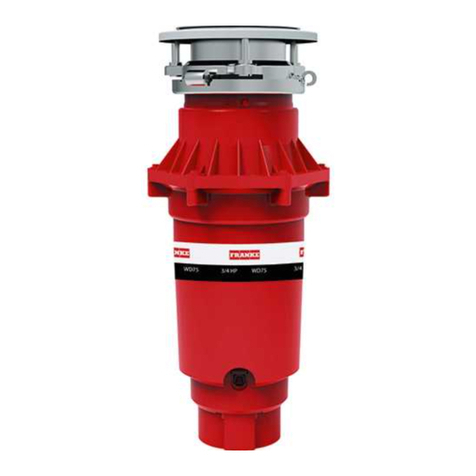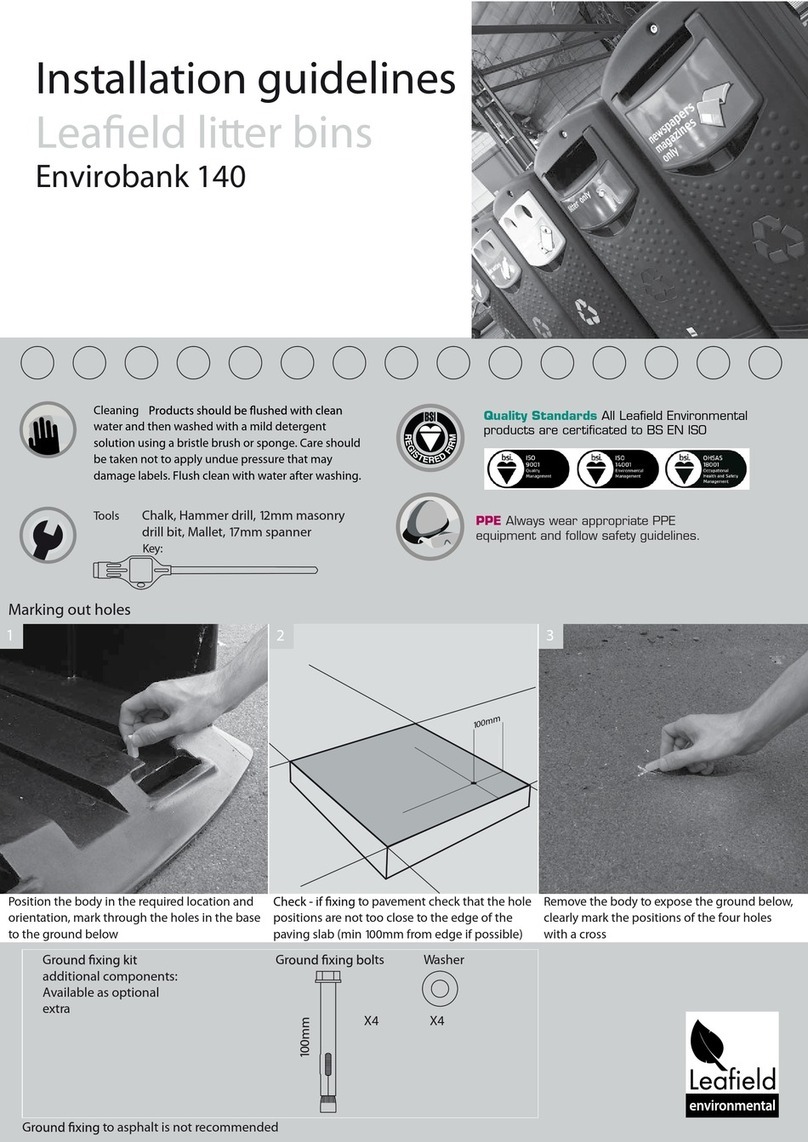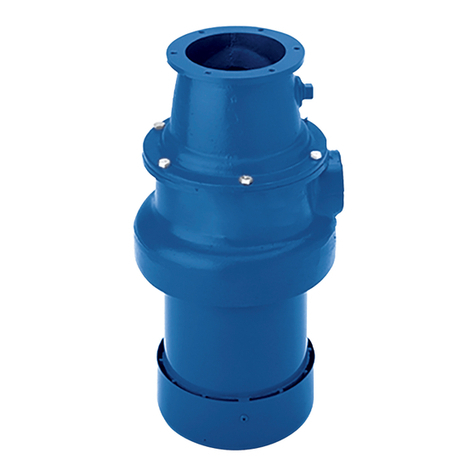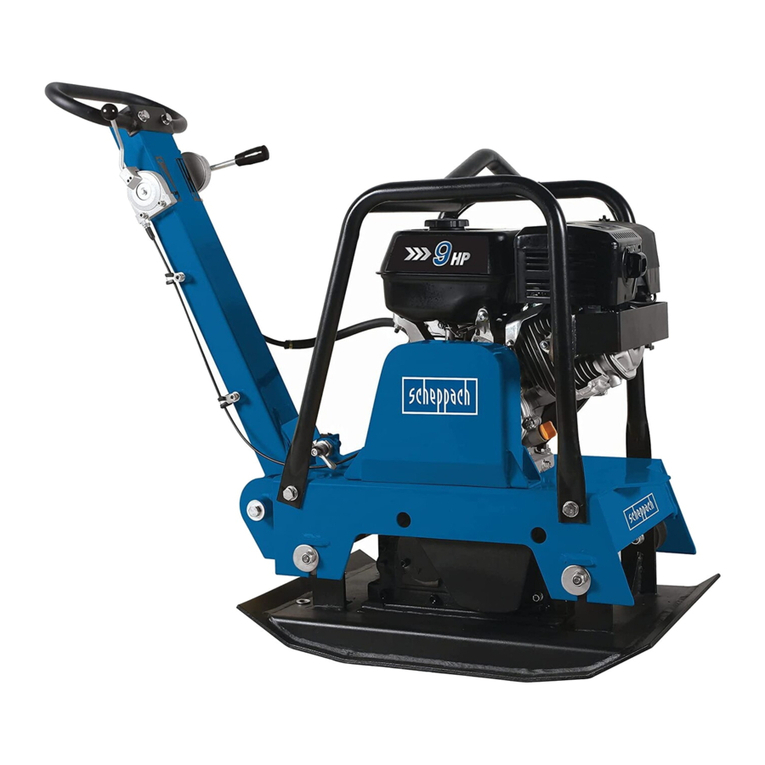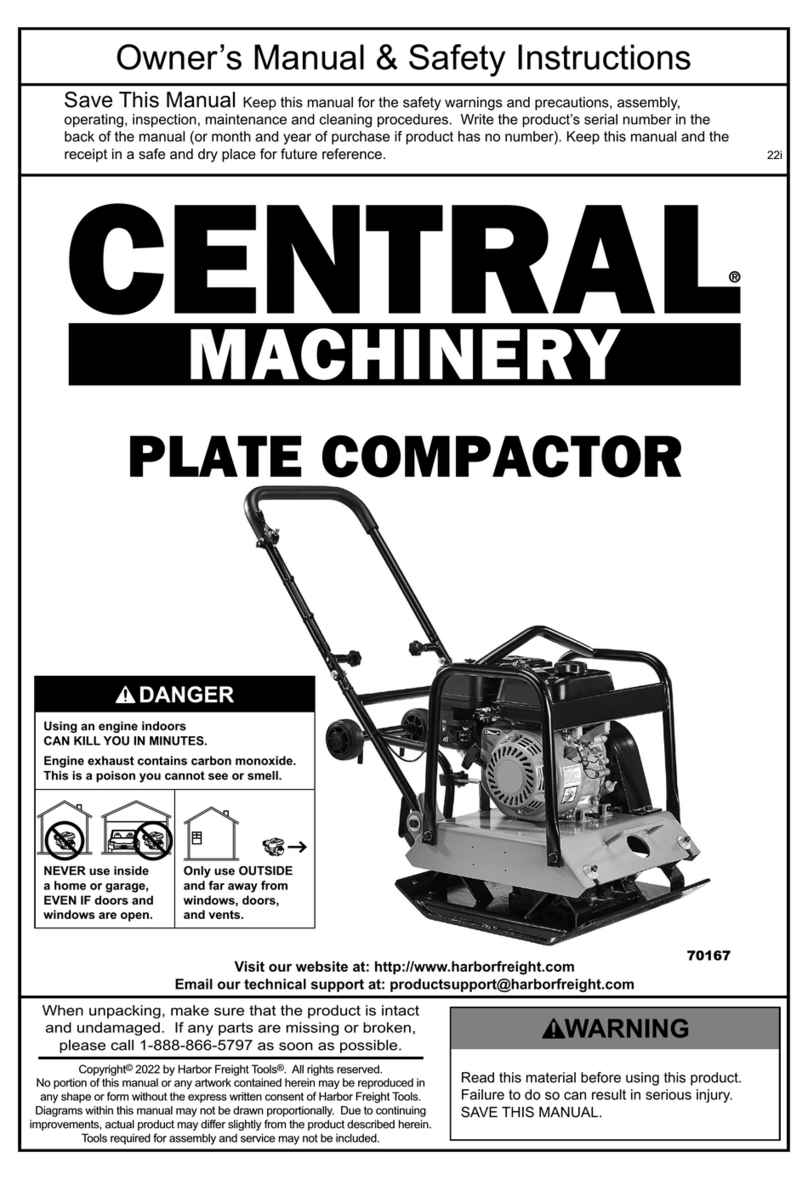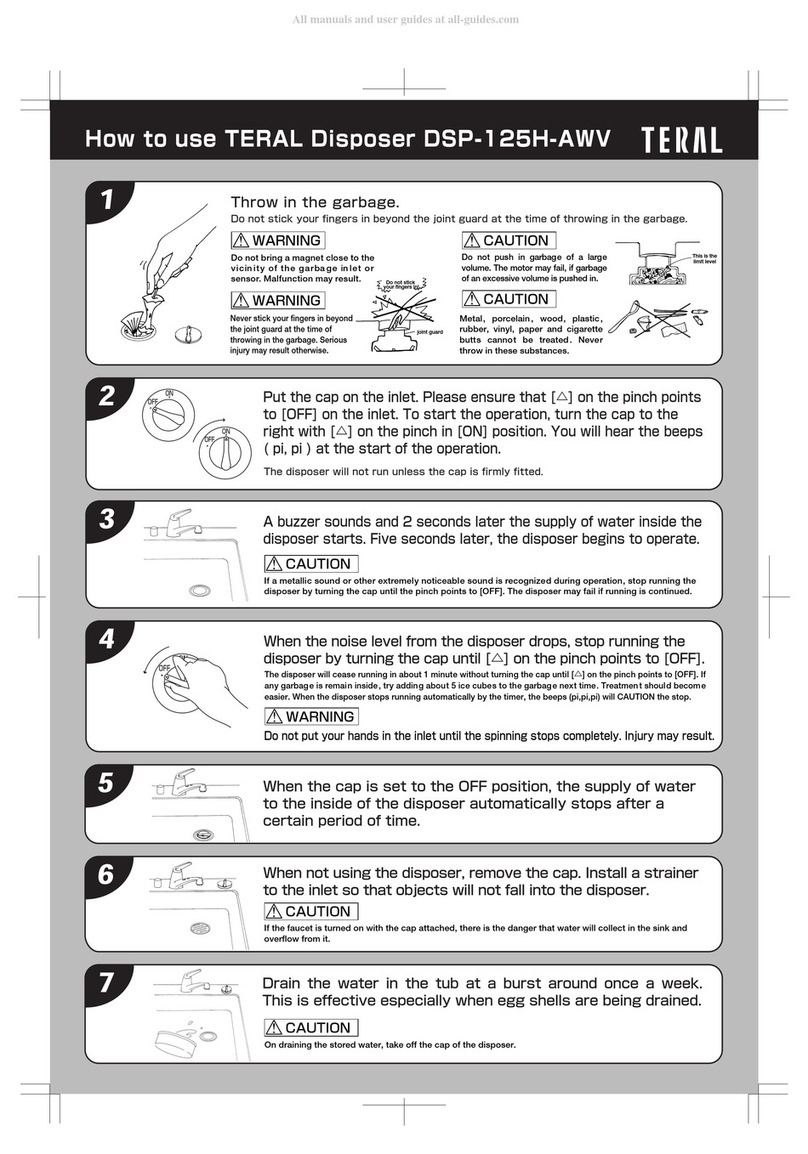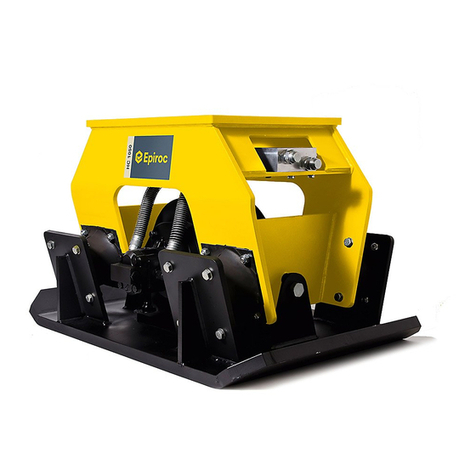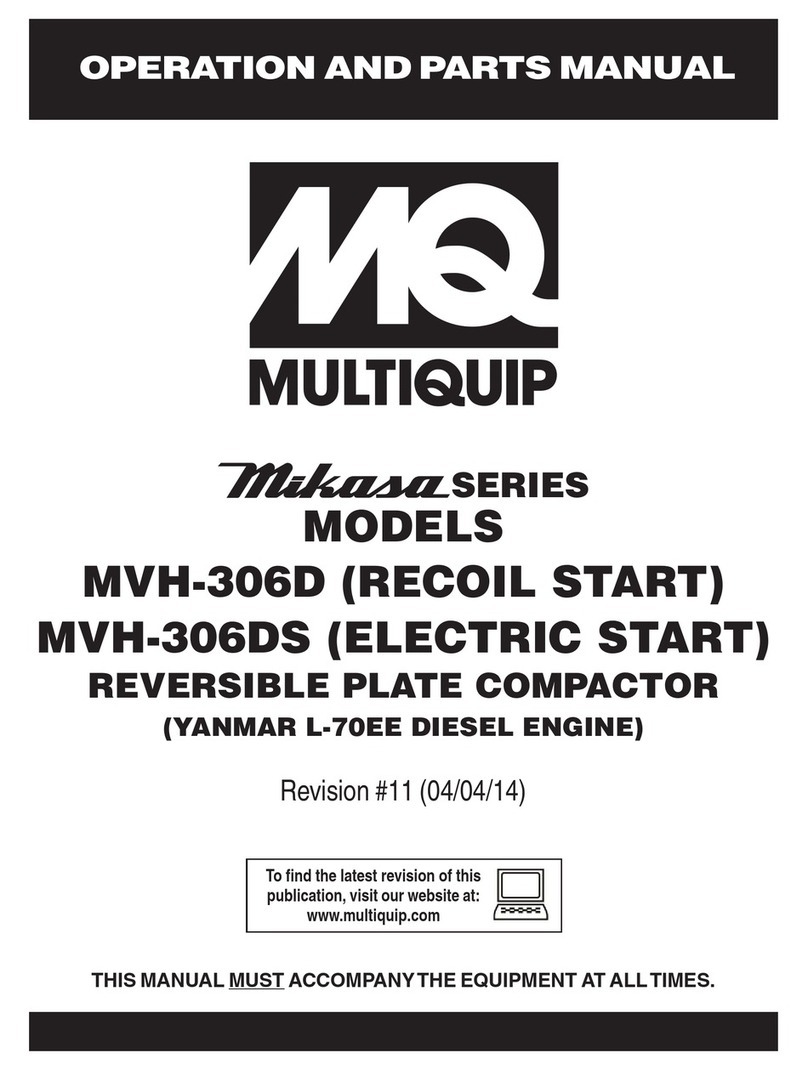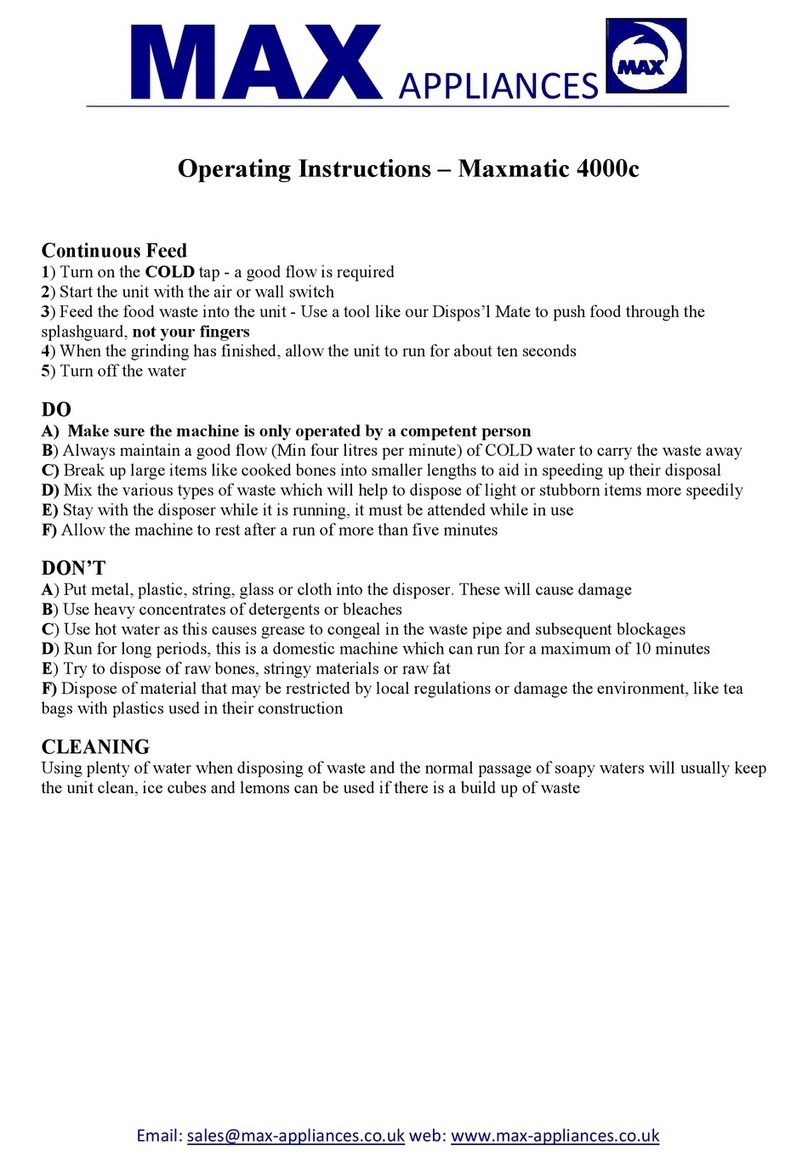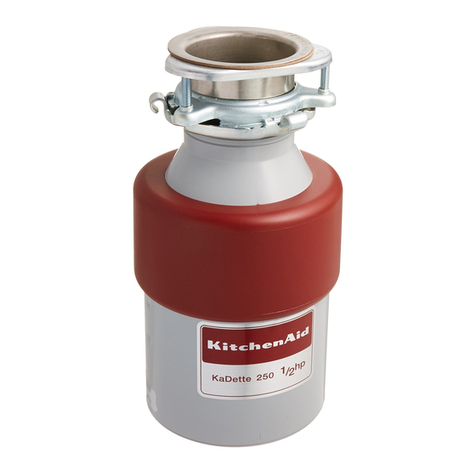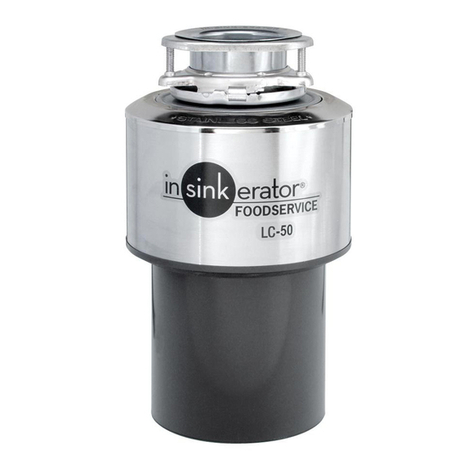Table Mechanism
The table mechanism assembly is fitted to and contained within the base of the machine.
The table is rotated by a stepping motor. As the table rotating switch, #701, is depressed,
the table begins to rotate. The amount of rotation of the turntable can be controlled
by the time-delay circuit located in the switch box on the right side of the machine.
Turn the knob clockwise for more rotation or counter clockwise for less. Before starting
the machine the first time, turn the knob all the way to the left. Start machine without
hammer, turn knob slowly to the right until the desired amount of index is accomplished.
The knob setting can be left set, except for only minor adjustments.
Table Adjustment. Change mold sizes.
When changing molds from 4" to 6" or vice versa the whole base must be moved.
Loosen the 4 hex bolts on the table base. The whole assembly now can be moved in
or out for adjusting the clearance between hammer and inside diameter of mold. This
adjustment must be made when changing from one mold size to another. The clearance
should be about 0.1" or 2.5 mm.
Predetermining Counter
To start machine up:
Switch the power on, (your wall switch) the counter will light up showing "00". At this
point the jog button is operative. Set the counter by pressing "X 10" for tens. "X 1" for
single digits, then press "Reset". Now the counter is set up.
Push the start button, the machine will start up, when counter shows "00", the machine
will stop. To repeat the same number of blows only the "Reset" needs to be pressed.
If the hammer is picked up by the jog button, or being held up to add more soil the
counter should be set one count less than the desired count. When machine is not in use
the power should be turned off (Your wall switch).
Height Change Mechanism
The top cam, #413, is located on the cam bar, #1410, at the rear of the carriage. The
cam disengages the catch #304, and causes the hammer to fall. There are two positions
in which this cam can be placed. The lower position will release the hammer from a 12"
drop and the upper position will release the hammer for an 18" drop. To change the
cam from one position to an other, it is only necessary to remove the socket cap screw,
#418. The cam is inserted in a slot and can be pulled out by hand. Insert cam in the
desired position and replace the screw. The slot in the upper cam is meant for calibration
adjustment.
Hammer Lifting Mechanism
A 1/2 HP electric motor is fitted with a gear box, which drives an endless chain. A link on
this chain carries a spindle, which fits into a bronze block. The bronze block slides in a
horizontal groove in the carriage, #2301. The carriage slides in a vertical direction on two
steel guide bars. The cam bar, #1410, has a slot at the upper end in which the top cam,
#413, is located. In a slot at the lower end, the pick-up cam, #414, is located. It is spring
loaded. With the carriage in the low position, the spring loaded cam will push the catch
